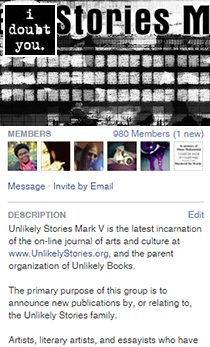An Interview with Carla Williams of Material Life
Carla Williams is back in the neighborhood where her parents were raised: the Lower Ninth Ward of New Orleans. There, she's opened Material Life, a populist art gallery and/or high-end gift shop that focuses on affordable pieces by outstanding contemporary artists. Guest Editor Rosalyn Spencer interviewed her for this issue.
 Rosalyn Spencer: How long have you been pursuing a career in the arts?
Rosalyn Spencer: How long have you been pursuing a career in the arts?
Carla Williams: I’ve worked in the art field, in many, various capacities since 1991, when I finished graduate school.
RS: How would you describe your aesthetic?
CW: My aesthetic preferences are driven by the work’s content first and its beauty second. If it doesn’t do anything more than look good, I’m less interested, though I’m a sucker for anything that sparkles.
RS: What defining moments helped shaped your aesthetic outlook?
CW: Being able to buy postcards, books, and other reproductions in museum bookstores transformed my relationship. I wanted to be able to always have those objects I loved so I came to really value reproductions because they were affordable and accessible to me.
RS: What are some of your experiences in the world of art as a woman of color that has led to your perspective of the art scene?
CW: Really, from the very beginning I couldn’t imagine educating myself and then spending my entire career working toward something that didn’t benefit African Americans as a whole. Individual enrichment or excellence was never going to be as rewarding as knowing that my work made a difference in creating access to a wide range of practitioners and a history that is constantly being uncovered and written.
RS: What experiences helped shape your current path as a curator and entrepreneur of art?
CW: I don’t consider myself a curator, though I have done curatorial work and loosely defined, I do select and put things together. I’m more of a collector who wanted to share my sources. Having worked for so long and with so many artists over the years, I have a lot of direct relationships with an extraordinary range of makers. And it’s nice having done some previous work that garners enough respect to open new doors.

RS: Are there any groups or outlets you can recommend that help like-minded individuals who are looking to navigate the business of selling art?
CW: The website Black Art in America fosters a collecting community, and I assume also a seller’s community since there isn’t one without the other. Design Sponge does an extraordinary job of featuring makers of color discussing the business of both making and selling their art. They’ve featured lots of artists I know and respect, like Kesha Bruce, who is an artist and curator whose curatorial project Baang + Burne has strongly supported artists as businesspeople. Design Sponge has also introduced me to quite a few makers whose work I now sell or plan to sell at Material Life.
RS: What are your ties to New Orleans and how did you come to the decision to return there?
CW: My mama ’nem are from New Orleans; I grew up in Los Angeles steeped in New Orleans culture through my mother, grandparents, and extended family. I started visiting when I was in graduate school, and I fell in love with it. I didn’t get to visit frequently until about eight years ago, when I was teaching and had summers off; I came to New Orleans every summer before I bought a house here three years ago.
RS: Speaking as one who has traveled extensively, and gathered many experiences along the way: how do you view the rebuilding of New Orleans?
CW: On a personal level, I feel like I’ve reclaimed my mother’s rightful place in New Orleans, even though she left more than sixty years ago. It feels like a homecoming. On a bigger level, I chose to buy a home and start a business in New Orleans because I consciously wanted my resources to help bolster this community and particularly to help rebuild Black New Orleans.
RS: What do you feel are the strengths and weaknesses of the New Orleans art scene?
CW: I’m not a part of the art scene in New Orleans by choice; I don’t really participate in it because I’ve never enjoyed it. I’m a retailer who sells objects made by artists, and that distinction is important to me, because I don’t think those who participate in the art scene should be the only audience for artists. Everyone should be.
RS: Why is Black Art and its acknowledgement in our culture important?
CW: A really good friend, who has worked in this field for more than 40 years, is still out there on the road constantly. Whenever I suggest to her that she slow down and rest on her laurels, she tells me she cannot, because if we don’t show up to represent ourselves, we don’t exist. No one questions when/why we’re missing except us, so we can’t allow our selves and our culture to be invisible. That aspect of this work never ends.
RS: How do you believe your experiences as a woman of color have impacted your perception of the art world?
CW: Entering into a field where I knew I was underrepresented actually gave me a tremendous amount of freedom not just to ask questions but to devise alternatives to a system I didn’t really want to support. Making changes is not as easy as identifying the problems, but once those fundamental shifts in perception take place, there’s no going back. Things are only as they are because we accept them and they only change when we do something different.

Community organizers Rosalyn Spencer, Jenna Mae, and Laura Mattingly planning for LadyFest at Material.Life

Rosalyn Spencer is the guest editor for Unlikely Stories Mark V's #BlackArtMatters issue. You can learn more about her at her editor's page.


